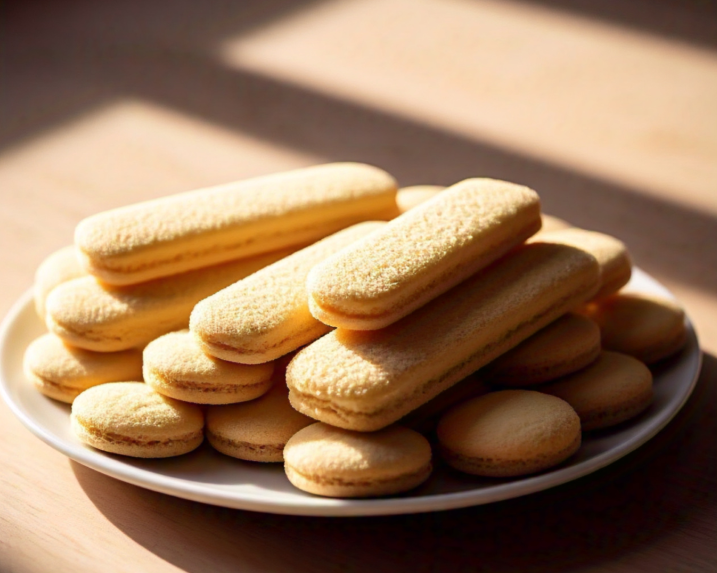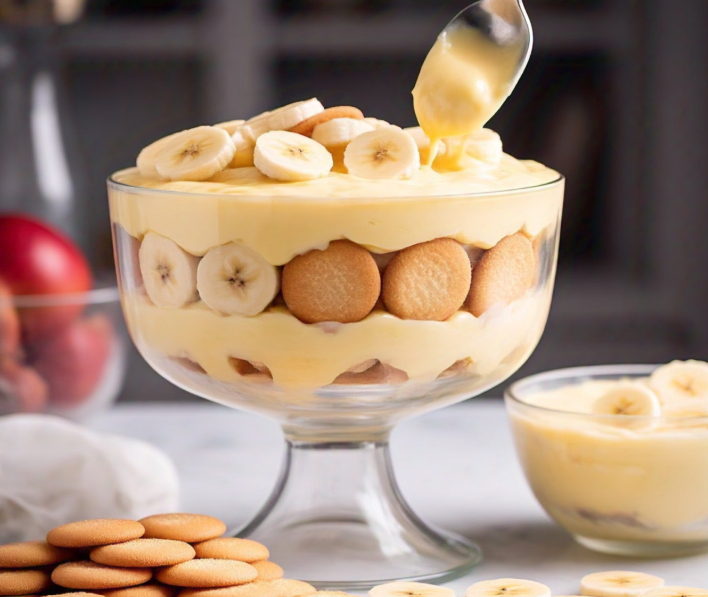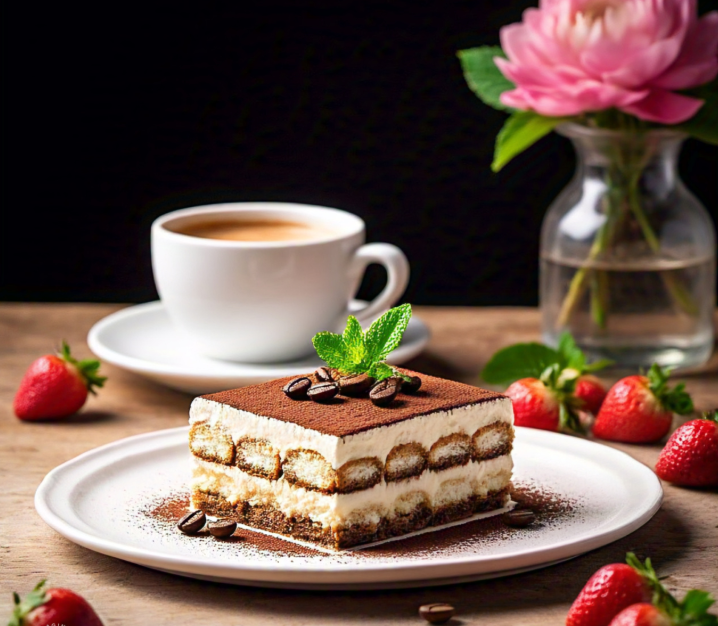When it comes to baking or preparing desserts, substituting vanilla wafers for lady fingers is often the key to creativity or last-minute saves. One of the most common questions in the dessert world is: can you sub vanilla wafers for lady fingers? These two ingredients appear in similar recipes, but they aren’t exactly twins. If you’ve ever wondered whether vanilla wafers could replace lady fingers in your favorite dessert, you’re in for a treat. Let’s dive into everything you need to know, from textures and flavors to recipe transformations.
Understanding the Ingredients: Vanilla Wafers and Lady Fingers
What Are Vanilla Wafers?
Vanilla wafers are bite-sized, crisp, and sweet cookies that practically melt in your mouth. Often made from flour, sugar, and a hint of vanilla flavor, they’re the type of snack that can easily disappear before you know it. Popular brands like Nilla Wafers have solidified their spot in classic recipes such as banana pudding and icebox cakes. Their light texture and slightly crumbly nature make them a versatile choice for many desserts.
Interestingly, vanilla wafers have been around for decades and are a nostalgic favorite in many households. Their neutral flavor profile allows them to blend seamlessly with creams, fruits, and custards.
What Are Lady Fingers?
Lady fingers, on the other hand, are a completely different breed of dessert ingredient. Known as savoiardi in Italian cuisine, they’re delicate sponge cakes shaped into elongated fingers. These treats are much lighter and airier compared to vanilla wafers, with a texture that absorbs liquid like a sponge.
Lady fingers shine in recipes like tiramisu or charlotte cakes, where their unique ability to soak up coffee, liqueurs, or syrups gives desserts their signature moist consistency. They’re slightly sweet with a firm exterior, which helps them maintain their shape when layered.
Key Differences Between Vanilla Wafers and Lady Fingers

Although they both serve as foundational components in desserts, vanilla wafers and lady fingers have distinct characteristics. Understanding these differences is essential when considering substituting vanilla wafers for lady fingers.
- Texture: Lady fingers are light and spongy, while vanilla wafers are firm and crisp.
- Absorption: Lady fingers soak up liquids effortlessly, whereas vanilla wafers resist becoming too soggy unless heavily saturated.
- Shape and Size: Lady fingers are long and finger-like, while vanilla wafers are small, round cookies.
- Flavor Profile: Both are mildly sweet, but vanilla wafers have a richer buttery flavor compared to the subtle sweetness of lady fingers.
So, does this mean you can’t substitute one for the other? Not at all! With a few adjustments, you can make vanilla wafers a great alternative to lady fingers.
Situations Where Substitutions Are Necessary
Why Might You Substitute Vanilla Wafers for Lady Fingers?
Ever find yourself halfway through a recipe only to realize you’re missing a key ingredient? That’s where substitutions, like substituting vanilla wafers for lady fingers, come in handy. Maybe your local store ran out of lady fingers, or you simply prefer the taste of vanilla wafers. Budget constraints or dietary preferences might also push you toward experimenting with substitutions.
Other times, you might want to put a unique spin on a classic dessert. Vanilla wafers, with their distinct flavor and crunch, can breathe new life into traditional recipes like tiramisu or trifle.
How Substitutions Affect Recipes
Switching out lady fingers for vanilla wafers can change a dessert’s texture, flavor, and even its presentation. For instance:
- Texture: Expect a firmer bite when using vanilla wafers. They don’t soak up liquid as quickly as lady fingers, which can impact the dessert’s overall moisture level.
- Flavor: The buttery notes of vanilla wafers can add depth to desserts, but this might overpower lighter flavors found in recipes like tiramisu.
- Appearance: Since vanilla wafers are smaller, layering them might require more cookies to cover the same surface area as lady fingers.
Despite these changes, many desserts turn out beautifully with a little tweaking. The trick lies in understanding how to adapt the recipe.
Recipes That Use Vanilla Wafers or Lady Fingers
Classic Tiramisu: Can Vanilla Wafers Work?
Tiramisu is one of the most beloved desserts in the world, with its luscious layers of mascarpone cheese, coffee-soaked lady fingers, and cocoa dusting. But can vanilla wafers step in for lady fingers without ruining this iconic dish? Absolutely!
While traditional tiramisu relies on the absorbent quality of lady fingers to soak up espresso and liqueurs, vanilla wafers can be a worthy substitute with a few adjustments. For best results:
- Prepare a Coffee Mixture: Soak the wafers briefly in strong coffee mixed with a splash of rum or amaretto. Don’t overdo it, as vanilla wafers can become too mushy if they sit in the liquid too long.
- Layer Strategically: Use more wafers than you would lady fingers to cover the base of your dish fully.
- Let It Rest: Allow the assembled tiramisu to chill in the refrigerator for several hours. This gives the wafers time to soften and absorb the surrounding flavors.
The result? A slightly firmer but equally delicious take on classic tiramisu.
Banana Pudding: A Perfect Vanilla Wafer Recipe
If there’s one dessert where vanilla wafers shine, it’s banana pudding. This Southern classic features layers of creamy vanilla custard, ripe banana slices, and crunchy wafers. But what if you’re tempted to swap the wafers for lady fingers?
Lady fingers, with their sponge-like consistency, may not provide the same satisfying crunch as vanilla wafers. However, they can work if you’re aiming for a softer texture throughout the dessert. Keep in mind:
- Lady fingers absorb the custard faster, so your dessert might turn out slightly wetter.
- To mimic the flavor of vanilla wafers, consider dusting the lady fingers with powdered sugar or adding a touch of vanilla extract to the custard.
Still, for banana pudding purists, vanilla wafers remain the gold standard.
Charlotte Cake: Lady Fingers vs. Alternatives
Charlotte cakes are a showstopper dessert that uses lady fingers to create a structured outer layer. This cake is often filled with fruit mousse or custard, and its elegant presentation relies heavily on the sturdy shape of lady fingers. However, substituting vanilla wafers for lady fingers can offer a creative twist while still achieving a delightful flavor and texture.
So, can vanilla wafers do the job? Yes, but with a bit of creativity:
- Crushed Wafers: Instead of lining the mold with whole cookies, crush vanilla wafers and mix them with melted butter to form a crumb crust.
- Alternate Layers: Use vanilla wafers as an inner layer within the filling for added texture and flavor.
While the appearance may differ from the traditional version, the taste will remain delightful and crowd-pleasing.
Tips for Using Vanilla Wafers as a Substitute
Adjusting the Texture for Best Results
The main challenge when substituting vanilla wafers for lady fingers is the difference in texture. Vanilla wafers are denser and less absorbent, so you’ll need to adapt your approach:
- Pre-Soaking: Briefly dip the wafers in the liquid (coffee, syrup, etc.) to soften them. Avoid soaking for too long, as they might crumble.
- Layer Generously: Since wafers are smaller, you’ll need more of them to achieve a full layer in your dessert.
With these tweaks, vanilla wafers can mimic the softness of lady fingers while adding a delightful crunch.
Enhancing Flavor When Substituting
Lady fingers bring a subtle sweetness to desserts, but vanilla wafers can sometimes dominate the flavor profile. To strike a balance:
- Pair them with bold ingredients like dark chocolate, espresso, or tart fruits.
- Reduce added sugar in recipes to compensate for the sweetness of the wafers.
For a unique twist, try brushing the wafers with a flavored syrup or liquor before layering them into your dessert.
Common Problems When Substituting and Their Solutions
Soggy Layers: How to Avoid Them
One common issue with substituting vanilla wafers is sogginess. Since they don’t absorb liquids as uniformly as lady fingers, it’s easy to overdo the soaking process. To prevent this:
- Dip wafers quickly and shake off excess liquid before using them.
- Layer them with thicker components like custard or mousse to maintain structure.
Balancing Sweetness in Substitutions
Vanilla wafers are naturally sweeter than lady fingers, which can make some desserts overly sugary. To fix this:
- Opt for unsweetened ingredients like plain mascarpone or bitter cocoa powder to balance the flavors.
- Use fresh fruits like raspberries or citrus to add tartness and complexity.
Maintaining Structural Integrity in Desserts
Lady fingers provide a sturdy base for layered desserts, but vanilla wafers may crumble under pressure. To maintain structure:
- Use smaller portions of filling between layers to avoid overwhelming the wafers.
- Chill the dessert thoroughly to help the wafers set into place.
Creative Alternatives to Both Vanilla Wafers and Lady Fingers

Graham Crackers: A Versatile Option
If neither vanilla wafers nor lady fingers are available, graham crackers can be a lifesaver. When substituting vanilla wafers for lady fingers, or when both options are out of reach, graham crackers step up as a sweet and slightly nutty alternative. These crackers work wonderfully in layered desserts like tiramisu or trifle. To make the most of graham crackers:
- Crush and Press: For a crust, crush graham crackers and mix them with melted butter to form a sturdy base.
- Layer Like a Pro: For recipes requiring soaking, break the crackers into manageable pieces and dip them lightly in coffee, syrup, or milk.
Graham crackers’ texture and flavor make them a flexible choice, blending seamlessly with both creamy and fruity fillings.
Sponge Cake Slices: A Homemade Solution
For a more sophisticated alternative, thin slices of sponge cake can mimic the soft, absorbent qualities of lady fingers. If you’re up for a bit of baking, homemade sponge cake gives you complete control over sweetness and flavor. Key tips include:
- Cut to Fit: Slice the cake into strips or rounds that fit your dish.
- Infuse with Flavor: Brush the slices with coffee, syrup, or fruit juice for added moisture.
Sponge cake slices are perfect for desserts like tiramisu or charlotte, where a light and airy texture is essential.
Benefits and Drawbacks of Substituting Ingredients
Pros of Using Vanilla Wafers
Vanilla wafers bring several advantages when substituted for lady fingers:
- Accessibility: Found in almost every grocery store, they’re a convenient choice.
- Versatility: Their neutral flavor and crisp texture work in a variety of desserts.
- Cost-Effectiveness: Vanilla wafers are often more budget-friendly than specialty lady fingers.
Additionally, their long shelf life makes them a handy pantry staple for last-minute dessert-making.
Cons of Replacing Lady Fingers
Despite their strengths, vanilla wafers have some drawbacks as substitutes:
- Texture Limitations: Their crispness doesn’t replicate the sponge-like quality of lady fingers.
- Sweetness Overload: Vanilla wafers’ inherent sweetness can overpower delicate flavors.
- Shape and Size: Small and round, wafers require more effort to layer uniformly.
Understanding these pros and cons helps you decide when it’s best to swap ingredients and when it’s worth seeking out the real deal.
Frequently Asked Questions About Substitutions
Are vanilla wafers healthier than lady fingers?
Vanilla wafers and lady fingers have similar calorie counts, but their nutritional profiles vary. Wafers often contain more sugar and fat, while lady fingers are lighter and less calorie-dense. For a healthier option, choose whole-grain or low-sugar vanilla wafers if available.
Can substituting impact the shelf life of desserts?
Yes, it can. Lady fingers tend to hold up longer in moist desserts, whereas vanilla wafers might become too soft or soggy over time. To extend shelf life, store desserts made with wafers in airtight containers and refrigerate them promptly.
Is it possible to use homemade vanilla wafers as a substitute?
Absolutely! Homemade vanilla wafers allow you to control ingredients and sweetness levels, making them a fantastic substitute. Baking your own can also add a personal touch to your recipes.
How do I avoid overpowering flavors when using vanilla wafers?
Balance is key. Pair vanilla wafers with bold or tangy ingredients like coffee, dark chocolate, or citrus to offset their sweetness. Reducing sugar in other components of the dessert also helps.
Can I use vanilla wafers in savory recipes?
Although uncommon, vanilla wafers can work in savory dishes when crushed and combined with spices for coatings or crusts. However, their sweetness might not suit all recipes.
Do vanilla wafers work better for no-bake desserts?
Yes! Vanilla wafers are excellent in no-bake recipes like icebox cakes, where their texture softens without becoming mushy. They’re ideal for creating layers and adding a bit of crunch.
Conclusion: Making the Right Choice for Your Recipe
So, can you sub vanilla wafers for lady fingers? The answer is a resounding yes—with a few tweaks and considerations. Whether you’re making tiramisu, banana pudding, or an innovative dessert of your own creation, vanilla wafers bring versatility, flavor, and convenience to the table.
However, keep the differences in texture, sweetness, and absorption in mind as you experiment. Substitutions open the door to creativity, allowing you to customize recipes based on what’s available or your personal preferences. And remember, desserts are about joy and indulgence, so don’t hesitate to think outside the box and make the recipe your own!
Related Reads
Enhance your tiramisu knowledge by exploring these articles:
- Where Did Ladyfinger Cookies Originate? A deep dive into the history of ladyfingers and their place in desserts.
- What is a Good Substitute for Biscuit Base? Perfect for experimenting with alternative dessert bases.
- The Best Biscuit for Cheesecake Base Ideas for biscuit swaps that also work for tiramisu!

